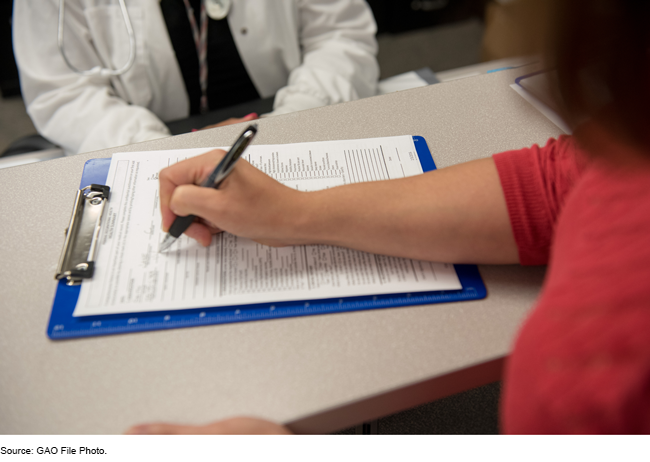Health Centers: Revenue, Grant Funding, and Methods for Meeting Certain Access-To-Care Requirements
Fast Facts
Health centers provide primary care in places with a shortage of health care services. They served over 30 million people in 2022—regardless of their ability to pay.
We reviewed health centers' revenue and more for 2018-2022. Annual revenue increased from $28.7 billion to $42.9 billion over this period.
The Health Resources and Services Administration provided $34 billion in grants to support these centers over that time, including funding for COVID-19 response. These grants require centers to be accessible—including for emergency care. Health centers complied with these requirements in many ways, such as using after-hours call centers.

Highlights
What GAO Found
In 2022, nearly 1,400 health centers provided primary and preventive health services to more than 30 million people, regardless of their ability to pay. Health centers' total revenue rose from about $28.7 billion in 2018 to $42.9 billion in 2022—an increase of more than $14 billion. The largest single source of revenue was Medicaid, accounting for over one-third of total revenue each year. The second largest revenue source each year was grants, including those provided by the Health Resources and Services Administration (HRSA).
Health Center Revenue Sources and Amounts, 2018 and 2022

Note: For more details, see figure 2 in GAO-24-106815.
HRSA awarded about $34 billion in grant funding to health centers through its Health Center Program in fiscal years 2018 through 2022. About two-thirds of that funding—$23.5 billion—was awarded for service area funding, which supports ongoing operations and services, including existing and recently expanded services, at health centers. The second largest category of funding was provided for the purpose of assisting health centers with preventing, mitigating, and responding to COVID-19. The remaining grant funding supported special initiatives, such as cancer screening; increasing services at existing health centers; and increasing the number of health centers and sites.
Health centers used various methods to meet requirements that they provide care at accessible locations and hours, and coverage for medical emergencies after regularly scheduled hours. According to officials from five primary care associations—organizations that provide technical assistance to health centers —most health centers in their states have at least one site that regularly offers extended hours, such as evenings or weekends, to accommodate patient needs. Officials said health centers have varied arrangements to ensure patients are evaluated after hours by a clinician and referred to emergency care or local urgent care as appropriate. GAO's analysis of HRSA's site visit findings from 2018 through 2022 found that over 93 percent of the 1,391 health centers that had a site visit complied with both of these access-to-care requirements. Health centers not in compliance took corrective actions, such as expanding clinic hours to include weekend hours and contracting with nurse triage services to clinically evaluate patients who called with symptoms after regular hours.
Why GAO Did This Study
Health centers rely on revenue from a variety of public and private sources, including grants awarded by HRSA through its Health Center Program. Among other things, HRSA requires health centers to have locations and hours that are responsive to patient needs, and to have procedures to handle medical emergencies that arise after hours.
GAO was asked to review health centers' revenue, grant funding, and efforts to meet certain access-to-care requirements. This report describes (1) amounts and sources of health centers' revenue from 2018 through 2022; (2) purposes of HRSA grants awarded from fiscal year 2018 through 2022; and (3) methods used to meet requirements for accessible locations and hours, and coverage of medical emergencies after hours.
GAO analyzed health center revenue data from HRSA and the Department of Health and Human Services for 2018 through 2022, the most recent data available. GAO also reviewed documentation for HRSA grants awarded from fiscal years 2018 through 2022 to determine grant amounts and purposes.
Additionally, GAO reviewed results of health center site visits HRSA conducted from 2018 through 2022 that assessed compliance with certain access-to-care requirements. GAO also interviewed officials from five primary care associations, selected to achieve variation in geographic distribution and number of health centers in their states.
For more information, contact Michelle B. Rosenberg at (202) 512-7114 or rosenbergm@gao.gov.
